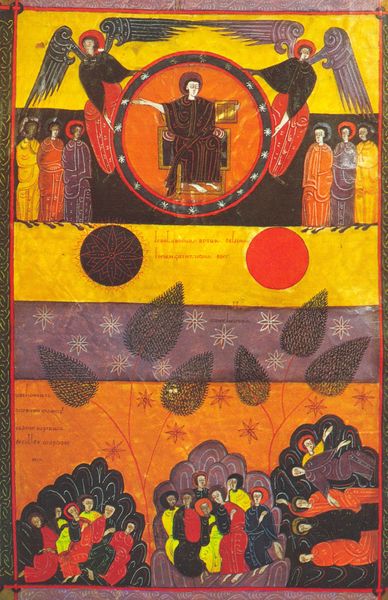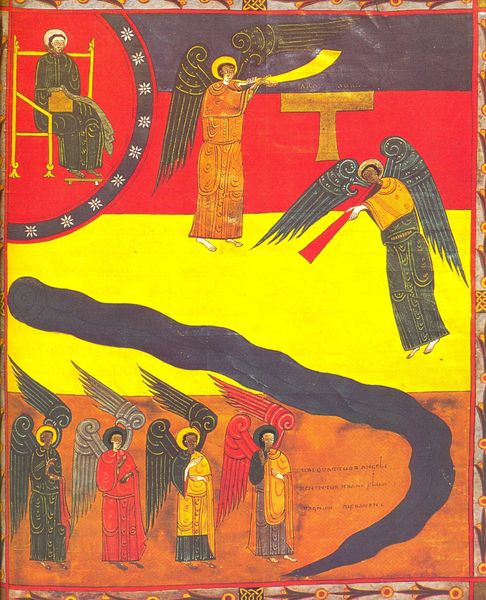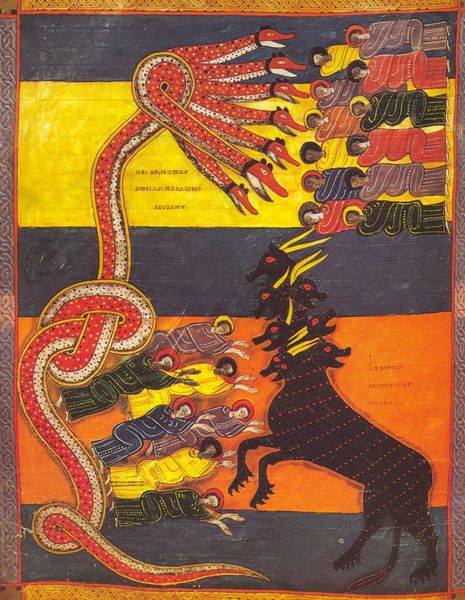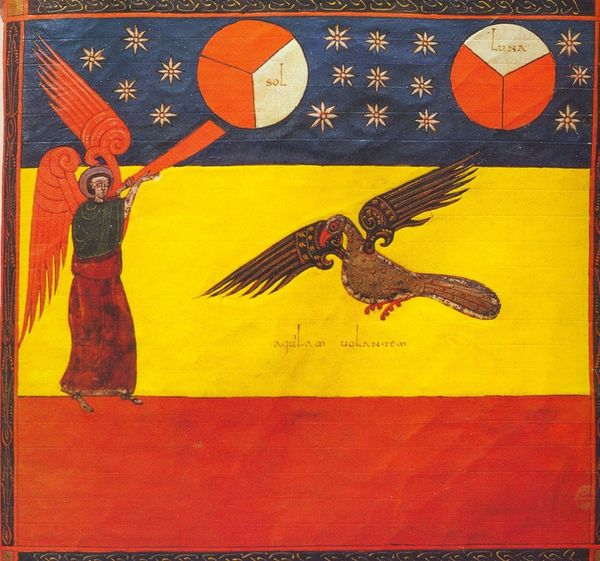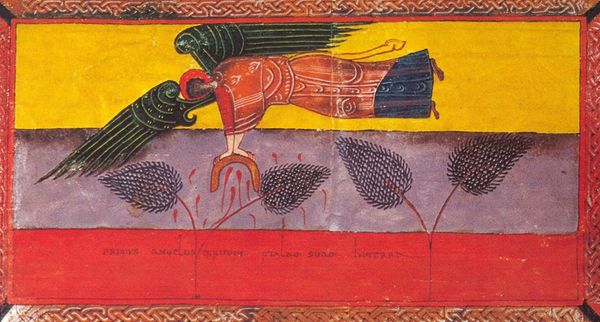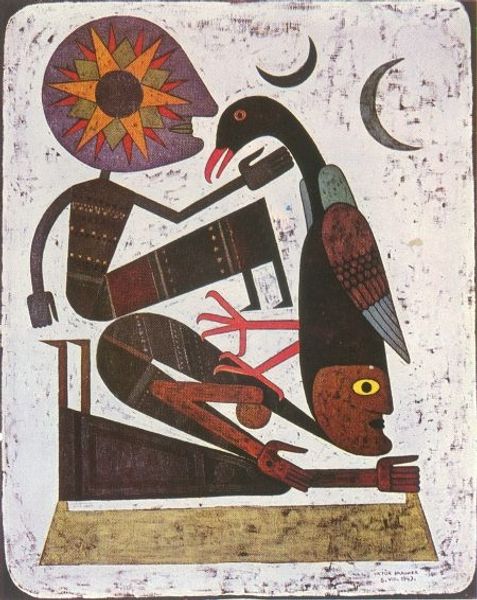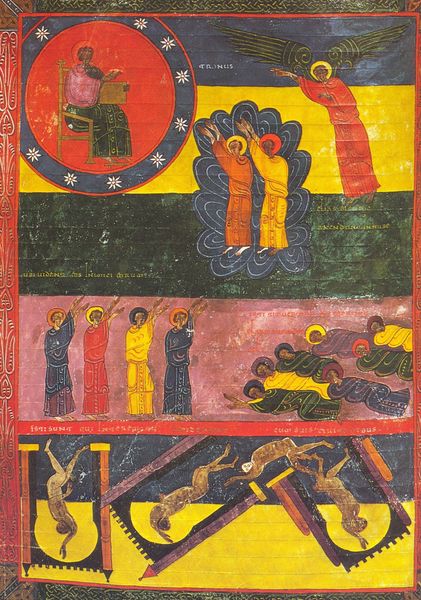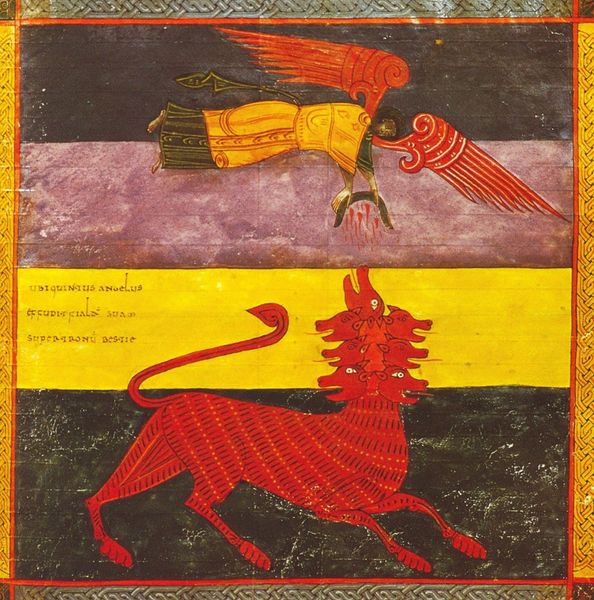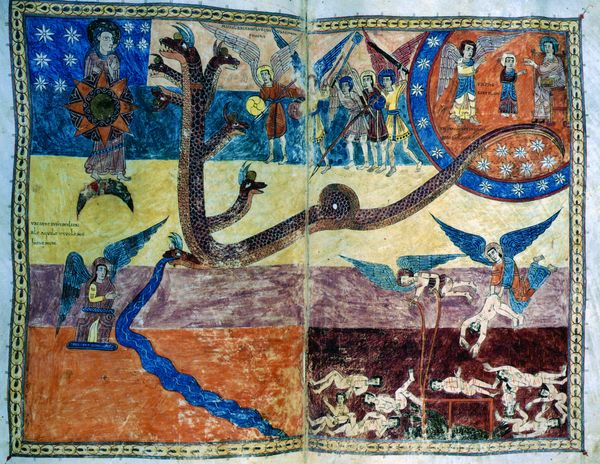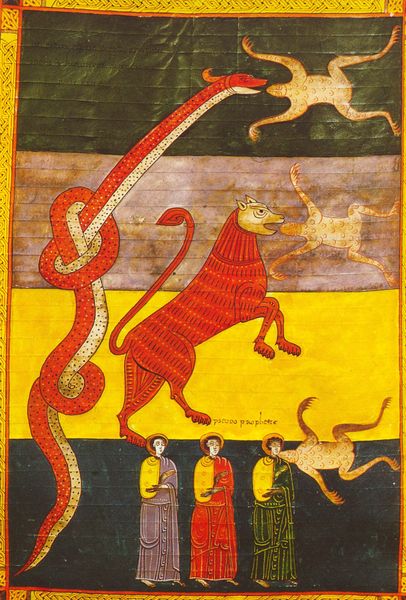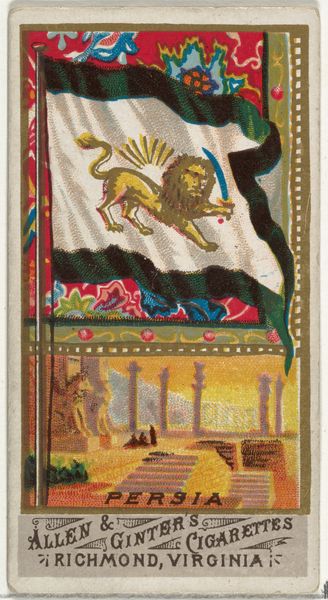
La cinquième Trompette. L'Astre tombé des Cieux. La clef du Puits de l'Abîme. Apoc. VIII
0:00
0:00
tempera
#
byzantine-art
#
narrative-art
#
tempera
#
figuration
Copyright: Public domain
Facundus created this illustration, La cinquième Trompette, around 1050, during a period of significant religious and social upheaval in Europe. It visualizes a passage from the Book of Revelation, a text rife with apocalyptic imagery. In it, a figure blows a trumpet; below, scorpion-like demons torment nude humans. At the bottom, a haloed figure is opening the door to the abyss. Created in Spain during the Reconquista, when Christian kingdoms were battling for control of the Iberian Peninsula, it reflects the anxieties and heightened religious fervor of the time. The imagery, influenced by both Christian and Islamic artistic traditions, would have resonated deeply with a society steeped in religious belief and warfare. Understanding this artwork involves delving into the religious, political, and cultural history of medieval Spain. Scrutinizing illuminated manuscripts and studying theological interpretations can bring us closer to the mindset of the artist and audience. The meaning of art hinges on its social and institutional context.
Comments
No comments
Be the first to comment and join the conversation on the ultimate creative platform.
